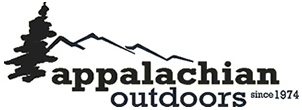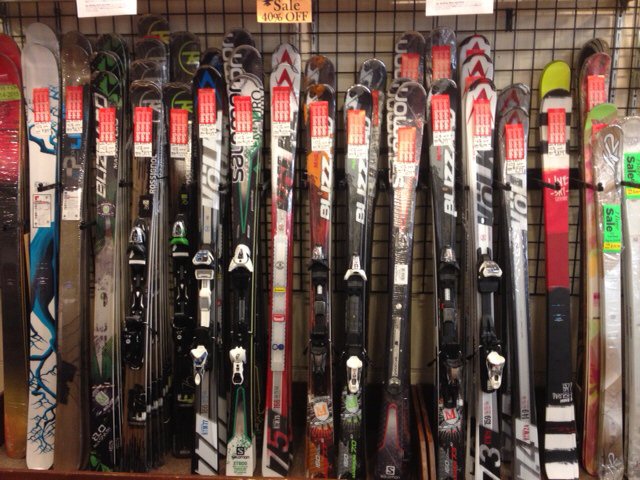by Bart Beck
OK, maybe Benedict Arnold is a little harsh, but I am cheating on my board. I recently decided to give skiing a shot after years of snowboarding. It’s not like I’ve lost interest in snowboarding, but I’m always looking to test myself on the slopes.
Since I live near a small ski slope named Tussey Mountain, I don’t have acres upon acres of slopes to explore every day. However, I still love to get out there and try to spend as much time on the snow as I can. Bringing in a new skill set, I can now keep myself readily challenged, and once I get tired of one activity, I can switch it up and keep pushing myself. For those boarders out there interested in trying out skiing, I have some tips and stories that my help you make the transition a little easier.
To start, there is your ski equipment. The most important part of your gear is your boots since these allow you to transfer your energy to your bindings and then to the skis. It’s important to get the fit right. Too tight, and you’ll be uncomfortable all day long; too loose, and you won’t get the good contact or stability required to make a turn smoothly. When it comes time to buying a pair, it’s vital to head out to a ski shop such as Appalachian Ski and Outdoors to try on several pairs of boots and talk to the knowledgeable staff. After all, this is all about ensuring you have as much fun on the slopes, and you certainly don’t want your equipment working against you.
Next you have the skis and bindings. With all the brands and models on the market, this is something you’ll want to research and talk to people about (going to an actual ski shop could save you time). After looking into several sets and talking to plenty of knowledgeable people (remember, I’m a boarder, not a skier), I went with the Solomon Enduro XT skis with an integrated binding system. This gave me my skis and bindings all in one neat package. Of course, if you want a little more customization, you could opt to buy the skis and bindings separately, but I was looking to simplify things a bit.
The third piece of gear you need is your ski poles. Yes, that’s right; you now have three pieces of gear to keep track of: skis (with bindings on them), boots, and poles. Now it seems pretty obvious—picture a skier in your head and what gear do they have? Skis, boots, and poles. But after years of only keeping track of boots and a board, those pesky poles can slip your mind. After a recent ski trip to Seven Springs near Pittsburgh, I learned the hard way that those poles can be tricky to remember.
When I met my friend at his house and loaded my gear into his vehicle, he asked if I had everything. I said yep, but he noticed I seemed to be missing poles. After realizing I was about to be the only skier on the slopes without poles, we double-backed to my house to pick them up. By the time we were finally on our way to Seven Springs, we were way behind schedule. Once we arrived and geared up, we headed off to the first chair ride. About 50 yards from the vehicle, my friend asked me where my poles were, and I quickly did a 180 back to the vehicle.
You’d think that’d be the last time I’d forget the poles, but no. After an awesome day of making turns, we headed home, and as soon as I walked through my door I noticed I had left my poles in my friend’s car. So, three times in one day. Luckily, none of these times drastically impacted our day, but three times has to be some kind of record. Since then, you better believe I’ve been remembering my poles. I’m looking to put more energy into progressing rather than worrying about poles.
When it comes to turning, boards and skis use similar mechanics, so I personally found the transition wasn’t as difficult as I thought it would be. One crossover skill to remember is keeping your weight forward. Just like a snowboard, the front of the skis initiate the turn. Once your weight goes back, it becomes more difficult to make a good smooth turn. So, knees bent and weight forward— same idea as on a board. However, forward is a different concept.
On a board, when you think forward, you put your weight to your left or right side of your body. On skis, forward is towards the toes and directly in front of you. Simple enough, but after years of going sideways, I found that during my turns I was shifting weight to my sides rather that right in front of me. Much like driving in England, you know it’s different, but it’s tough to fight your instincts. When making a right turn on skis, I let my right shoulder drop back a little upon completing the turn. This seemed comfortable to me because it turned my shoulders to the position they’d be in if I was snowboarding. When it came time to initiate my next turn, I struggled because I let my should drop back, putting my weight in the backseat. I found that if I focused on my shoulders and their position in relation to the slope and my skis, it made my turns much smoother and easier. I started concentrating on my shoulders more than anything else. Like trying anything new, you can’t be afraid to make mistakes; you just need to learn and adjust from them.
If skiing has ever piqued your interest as it did mine, grab yourself a pair of rentals someday and try them out. When you’re out there, talk to some skiers or take a lesson to get some good pointers. Remember, you’re starting from ground zero basically, so don’t hesitate to check that ego at the door. If you find that riding the hill in a new and different way is something you enjoy, definitely pursue it further….just don’t tell your board.

